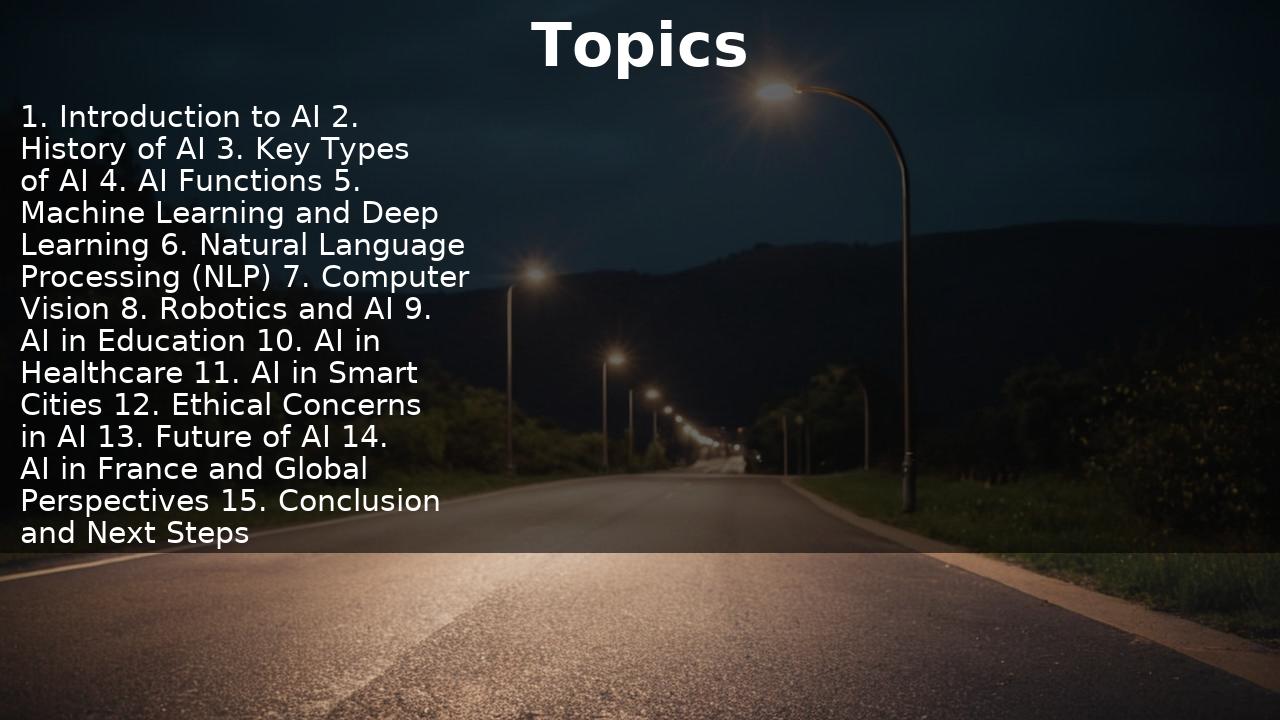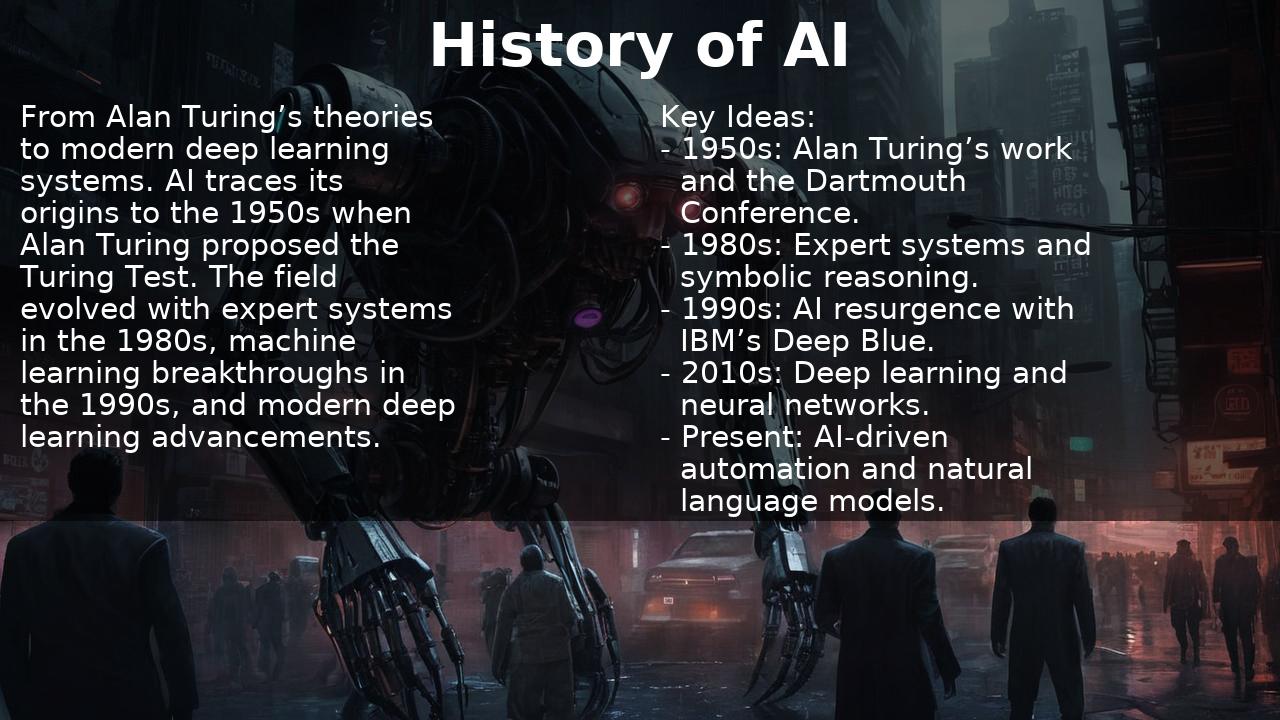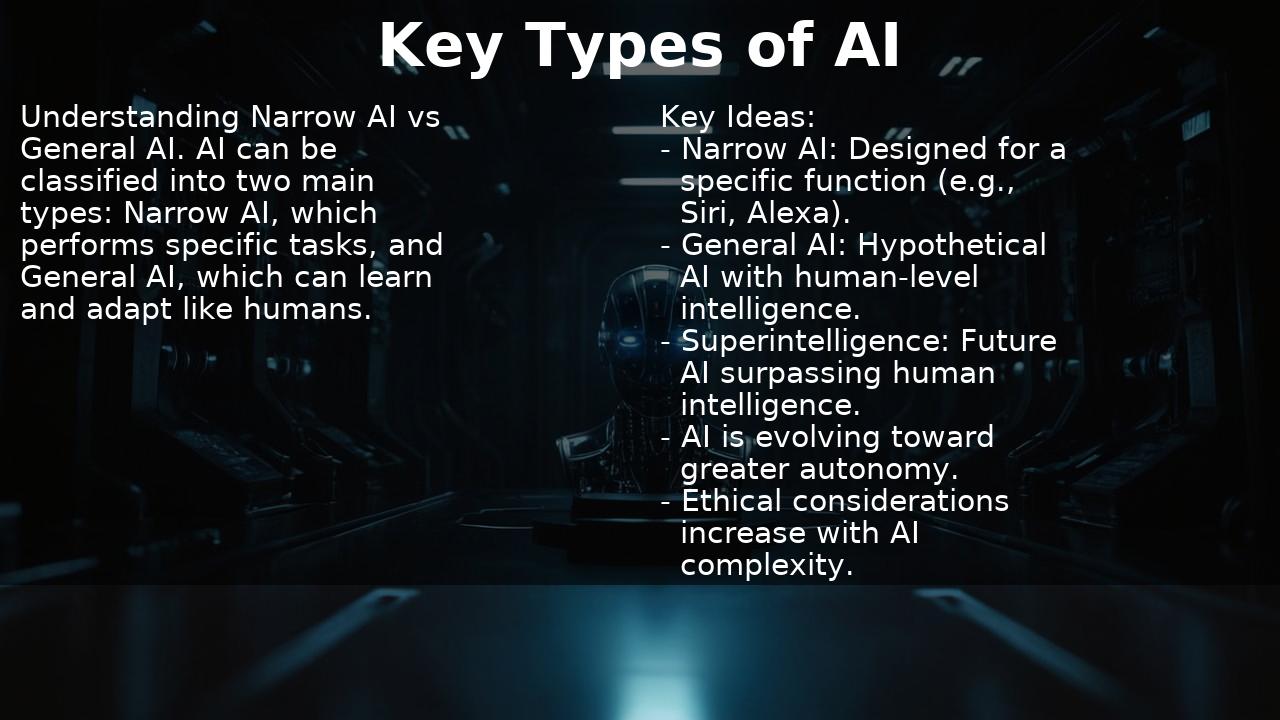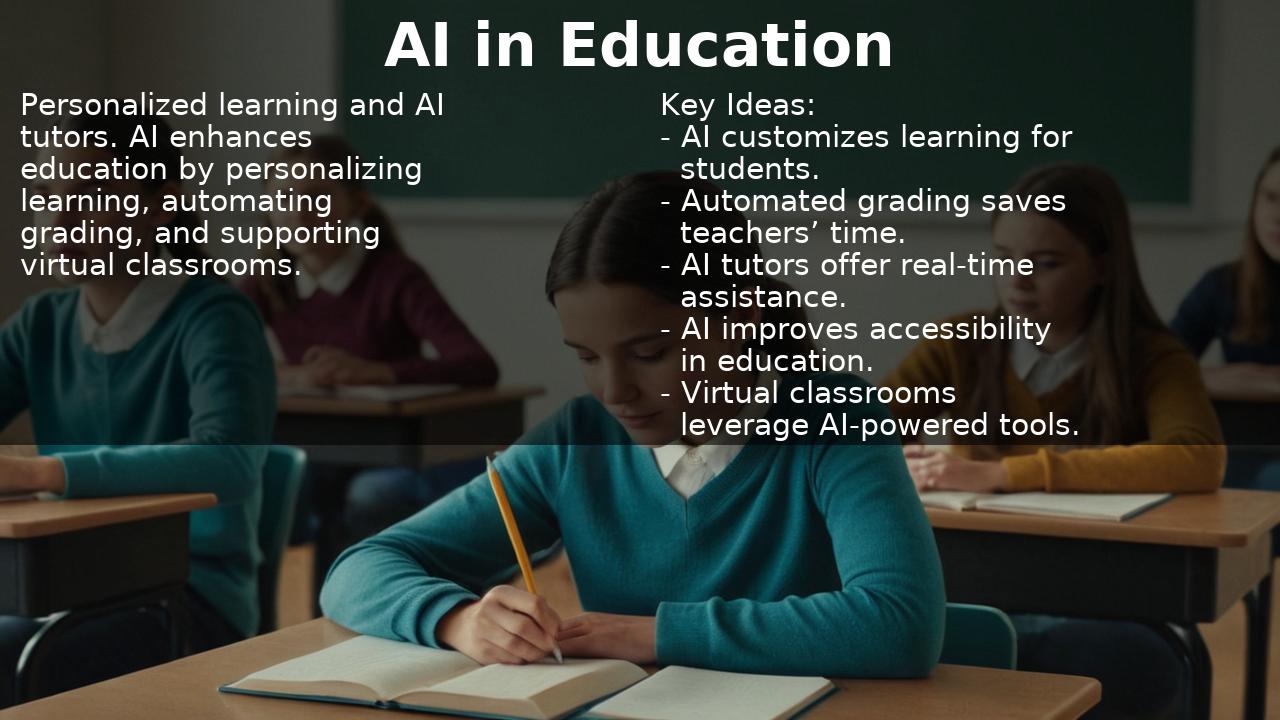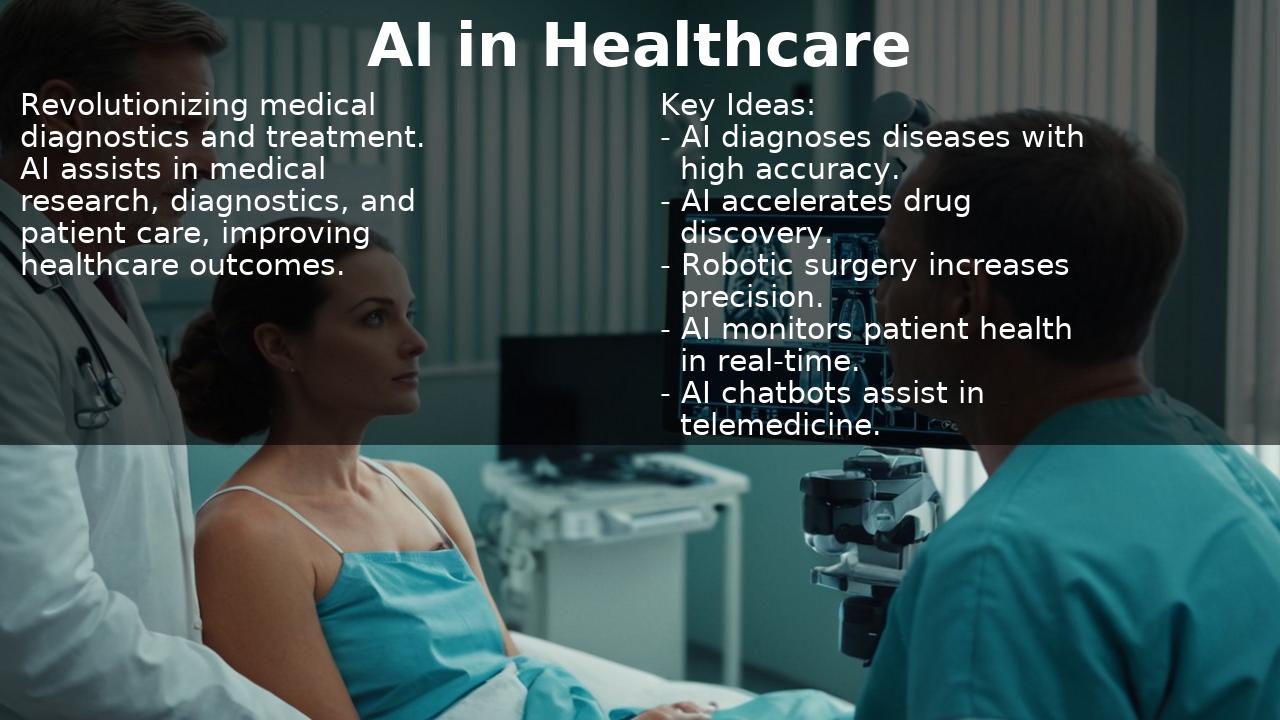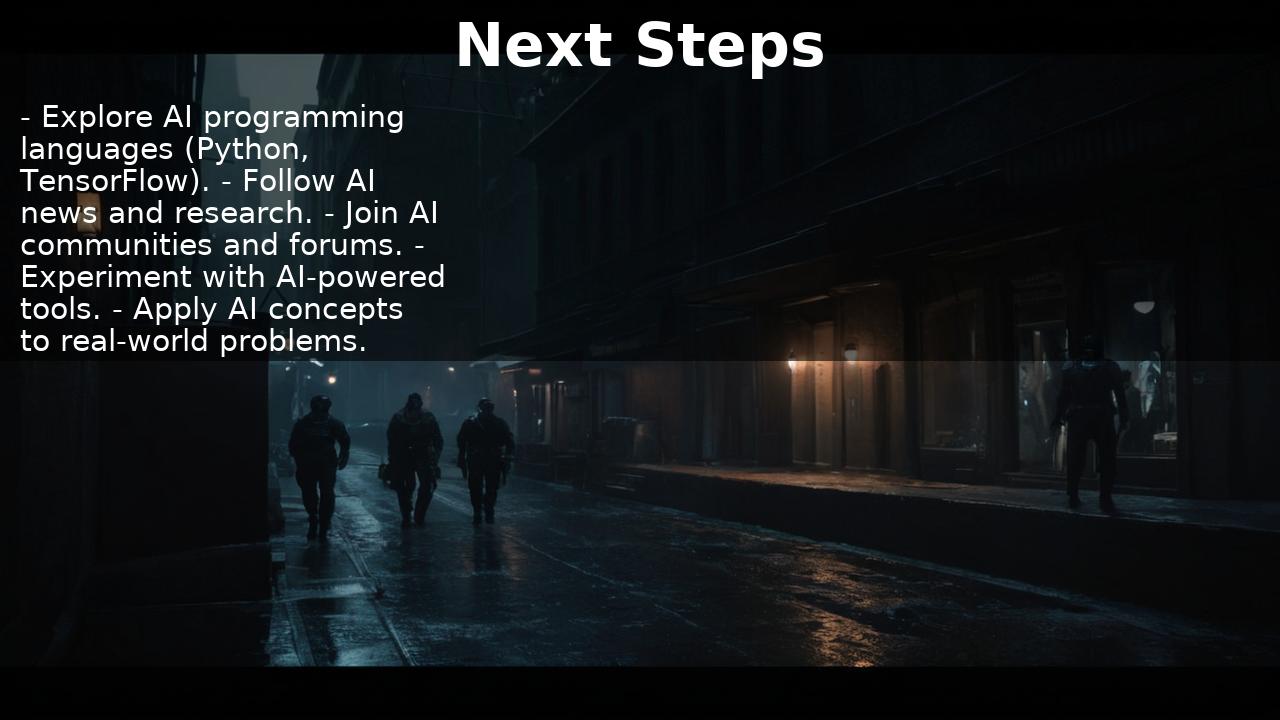Introduction to Artificial Intelligence (AI)¶
Artificial Intelligence (AI) is reshaping industries and everyday life. This course provides a deep understanding of AI, from its fundamental concepts to its applications in various sectors. Whether you're a beginner or looking to expand your knowledge, this course covers everything from machine learning to AI in healthcare, education, and smart cities.
Topics¶
- Introduction to AI
- History of AI
- Key Types of AI
- AI Functions
- Machine Learning and Deep Learning
- Natural Language Processing (NLP)
- Computer Vision
- Robotics and AI
- AI in Education
- AI in Healthcare
- AI in Smart Cities
- Ethical Concerns in AI
- Future of AI
- AI in France and Global Perspectives
- Conclusion and Next Steps
Introduction to AI¶
Understanding the core principles of Artificial Intelligence.
AI is the simulation of human intelligence by machines. It enables systems to perform tasks such as reasoning, learning, perception, and decision-making. AI is interdisciplinary, incorporating elements from computer science, neuroscience, mathematics, and linguistics.
Key Ideas:
- AI mimics human cognitive functions.
- It involves problem-solving, learning, and adaptation.
- AI spans multiple disciplines.
- AI systems can operate autonomously.
- It is applied in various industries, including education, healthcare, and automation.

History of AI¶
From Alan Turing’s theories to modern deep learning systems.
AI traces its origins to the 1950s when Alan Turing proposed the Turing Test. The field evolved with expert systems in the 1980s, machine learning breakthroughs in the 1990s, and modern deep learning advancements.
Key Ideas:
- 1950s: Alan Turing’s work and the Dartmouth Conference.
- 1980s: Expert systems and symbolic reasoning.
- 1990s: AI resurgence with IBM’s Deep Blue.
- 2010s: Deep learning and neural networks.
- Present: AI-driven automation and natural language models.

Key Types of AI¶
Understanding Narrow AI vs General AI.
AI can be classified into two main types: Narrow AI, which performs specific tasks, and General AI, which can learn and adapt like humans.
Key Ideas:
- Narrow AI: Designed for a specific function (e.g., Siri, Alexa).
- General AI: Hypothetical AI with human-level intelligence.
- Superintelligence: Future AI surpassing human intelligence.
- AI is evolving toward greater autonomy.
- Ethical considerations increase with AI complexity.

AI Functions¶
How AI systems learn, reason, and make decisions.
AI functions through algorithms that process vast amounts of data to identify patterns and make predictions.
Key Ideas:
- AI relies on data processing.
- Machine learning enhances AI performance.
- AI adapts through learning mechanisms.
- AI decision-making improves efficiency.
- AI applications range from automation to problem-solving.

Machine Learning and Deep Learning¶
Machines that learn from data and improve over time.
Machine learning (ML) enables AI to learn from experience. Deep learning (DL) expands ML by using artificial neural networks.
Key Ideas:
- ML models improve with data exposure.
- Supervised learning uses labeled data.
- Unsupervised learning detects patterns in unlabeled data.
- Reinforcement learning uses rewards to improve performance.
- Deep learning enables complex problem-solving.

Natural Language Processing (NLP)¶
Teaching AI to understand human language.
NLP enables AI to process and interpret human language, powering chatbots, translation tools, and speech recognition systems.
Key Ideas:
- NLP allows AI to understand text and speech.
- AI applications include virtual assistants (e.g., Siri, Google Assistant).
- Sentiment analysis identifies emotions in text.
- AI-powered translation improves multilingual communication.
- NLP is evolving with deep learning models.

Computer Vision¶
Enabling AI to interpret and understand images and videos.
Computer vision allows AI to analyze visual data, from facial recognition to autonomous vehicles.
Key Ideas:
- AI interprets images and videos.
- Facial recognition enhances security.
- Autonomous cars rely on AI vision.
- Medical imaging uses AI for diagnosis.
- Deep learning advances image recognition.

Robotics and AI¶
AI-driven robots transforming industries.
Robots powered by AI perform tasks autonomously, from warehouse automation to surgical precision.
Key Ideas:
- AI-driven robots enhance automation.
- Autonomous drones assist in surveillance.
- AI in robotics improves manufacturing.
- Smart robots interact with humans.
- AI optimizes logistics and transportation.

AI in Education¶
Personalized learning and AI tutors.
AI enhances education by personalizing learning, automating grading, and supporting virtual classrooms.
Key Ideas:
- AI customizes learning for students.
- Automated grading saves teachers’ time.
- AI tutors offer real-time assistance.
- AI improves accessibility in education.
- Virtual classrooms leverage AI-powered tools.

AI in Healthcare¶
Revolutionizing medical diagnostics and treatment.
AI assists in medical research, diagnostics, and patient care, improving healthcare outcomes.
Key Ideas:
- AI diagnoses diseases with high accuracy.
- AI accelerates drug discovery.
- Robotic surgery increases precision.
- AI monitors patient health in real-time.
- AI chatbots assist in telemedicine.

Conclusion¶
Congratulations on completing this AI course! AI is transforming industries and daily life, offering limitless opportunities. Continue learning by exploring AI tools, reading research papers, and engaging in AI discussions.
Next Steps¶
- Explore AI programming languages (Python, TensorFlow).
- Follow AI news and research.
- Join AI communities and forums.
- Experiment with AI-powered tools.
- Apply AI concepts to real-world problems.
Slides¶
